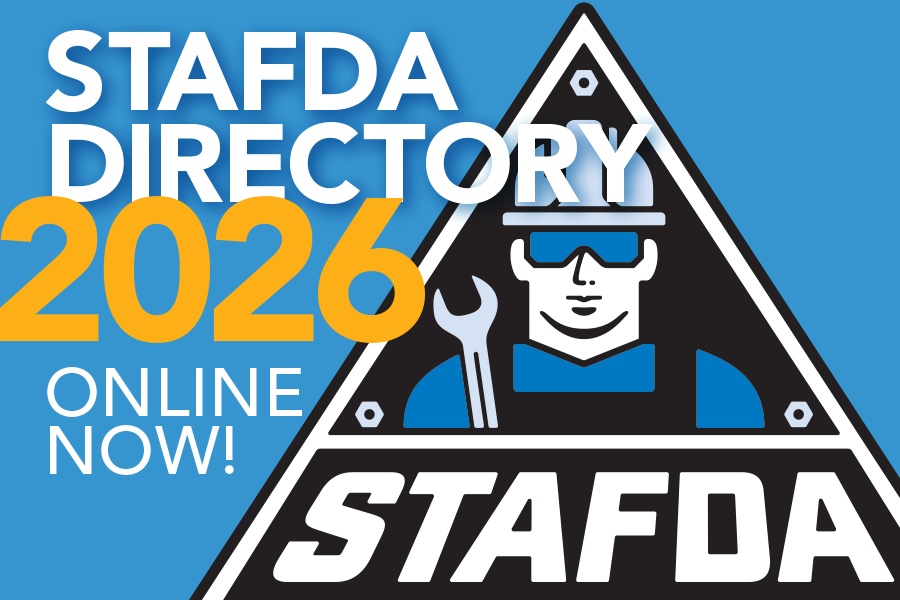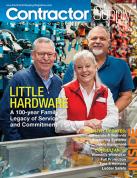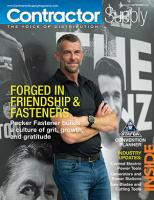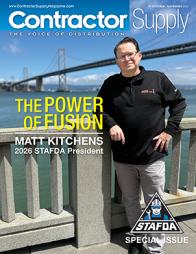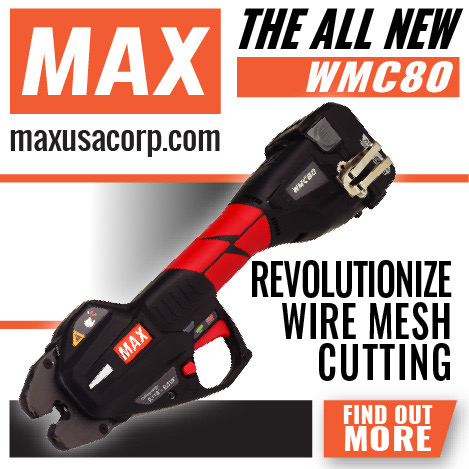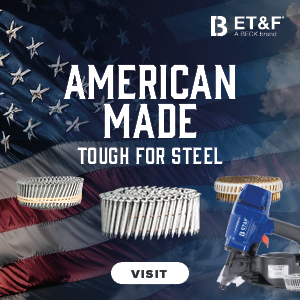 |
Choosing the correct fall protection full body harness is one of the most important decisions for workers at height. A properly designed, configured, and fitted harness allows a worker to confidently perform their work comfortably, along with the security that they are well-protected in the event of a fall. Full body harnesses are available in a variety of styles and configurations, but in this article, we will turn our attention to the most common options you’ll need to select from to start your work at height journey on solid footing.
D-RING CONFIGURATION
The initial configuration decision that needs to be made is the number and location of D-ring attachment points. Workers at height may utilize various D-rings in different work applications to provide maximum protection while accommodating the worker’s need for movement across the jobsite. The most common D-ring types are dorsal, hip, sternal, shoulder, and those on suspension seats.
 |
|
Full body harnesses are a key safety consideration on any jobsite where at height work is being conducted. Proper designs ensure both safety and comfort for |
A dorsal D-ring, located high on the back of the harness between the shoulders, is required on all full body fall protection harnesses and is the primary connection point for applications in which the worker may be subjected to a fall. During a fall, the dorsal D-ring allows even distribution of the fall forces throughout the harness and worker’s body, minimizing impact and potential injury. After a fall, it keeps the worker in an upright position for maximum comfort and situational awareness in preparation for rescue. The dorsal D-ring may also be used in travel restraint applications in which the worker is physically prevented from reaching a fall hazard.
Hip D-rings, also sometimes referred to as side D-rings or positioning D-rings are located on either side of the body at waist level. They are used in positioning applications only (such as rebar tower climbing) with a Y-style chain or web positioning lanyard. Hip D-rings must always be used in pairs – never one at a time – and are not suitable for use in fall arrest or travel restraint applications. Because hip D-rings are not permitted for use in fall arrest applications, workers must always use a dedicated backup fall arrest device in addition to a Y-style positioning lanyard.
Sternal D-rings (located centrally on the upper chest strap) are most used in fall arrest applications while climbing fixed ladders. They may also be used in travel restraint applications. For fixed ladder applications, the sternal D-ring is attached to a cable-mounted fall arrester which limits total fall arrest distance to 39 inches, or to an overhead-mounted self-retracting lifeline, both of which allow free movement up or down the ladder. Sternal D-rings should only be used in conditions in which the worker will fall feet first and must be deemed permissible by a competent person.
Shoulder D-rings are strictly for use in rescue or retrieval applications only. They must be used in pairs (typically with a spreader bar or other yoke style connector), and should never be used in fall arrest, travel restraint, or positioning applications.
Suspension seats are used in applications where the user is stationary while they work for extended periods of time such as on towers and window washing or maintenance operations. Suspension seat D-rings must be used as a pair and are not for use in fall arrest or travel restraint applications, and like positioning applications, require a separate backup fall arrest device.
BUCKLE TYPES
There are three main types of buckles utilized on fall protection harnesses, pass-through (sometimes called mating), quick-connect, and tongue-and-grommet.
Pass-through buckles are composed of two flat pieces of steel and are secured by passing one piece through the other, so they interlock. They are economical and lightweight, making them a practical choice, though handling with heavily gloved hands may take a little extra care.
Quick-connect buckles operate in the same manner as a car seatbelt and offer a positive connection, often with a visual indicator that the buckle is latched and safe for use. They are slightly heavier than pass-through buckles, but their ease-of-use (even with gloved hands) make them a popular choice. Quick-connect buckles are disengaged by pressing two levers on opposite sides of the buckle and pulling the two ends apart.
Tongue-and-grommet buckles operate like a common belt, are lightweight, and are typically the easiest buckle type to use. Tongue-and-grommet buckles are excellent for workers who must add or remove layers of clothing (for example cold weather or other protective gear), because they can be adjusted for optimum fit without the need to manipulate webbing through a fixed buckle and test fit. Simply pull strap to desired tightness and secure by inserting tongue through appropriate grommet. Remember, in cases where insulated clothing is required, your fall protection harness should be worn on the outside of your clothing, not underneath it.
 |
|
Guardian’s B7 Comfort harness provides precision adjustment and comfort for a truly comfortable fit. It was recognized with the 2023 Pro Tool Innovation award in |
FITTING
No matter which D-ring configuration or buckle type you choose on your full body harness, proper fitting is a critical to ensure your harness works as designed and protects you in the event of a fall. Follow these basic steps to properly put on your harness:
LANYARD ATTACHMENTS
All full body harnesses are required to include at least one lanyard parking attachment point—also called lanyard keepers, which are typically located on either side of the chest strap. They are used to store an unused lanyard leg to prevent workers from connecting unused lanyard legs to harness straps or D-rings which can cause serious potential injury in the event of a fall. Many parking attachments may auto-reset and are reusable, while others break away and cannot be used again. In either case, never use lanyard parking attachments as a fall arrest, travel restraint, or any other fall protection tie-off point.
TRAUMA RELIEF STRAPS
 |
| Trauma relief straps are a lower cost item that workers should install on their harness per manufacturer’s instructions for use in the event of a fall. |
Trauma relief straps help prevent the effects of orthostatic intolerance (dizziness or fainting) due to lack of blood flow caused by the constriction of harness webbing on the body after a fall. Trauma relief straps typically are attached to the sides of a harness and after fall, are deployed to create a loop of webbing on which the worker can stand to relieve the pressure of harness webbing. Given their low cost and high degree of effectiveness, every worker should ensure their harness be equipped with trauma relief straps, that they are attached according to the manufacturer’s instructions, and they are familiar with their use. It is highly recommended that the worker adjusts the webbing to the proper length before starting their work so that in the event of a fall, the trauma relief straps can be deployed and used immediately without the need to adjust while suspended.
The many available options on fall protection full body harnesses benefit the worker at height by allowing them to configure and personalize their harness for maximum comfort and safety based on the specific needs of the work application, environment, and even budget. Although this article has focused on the most common harness options you will need to choose from, there are many more specialized options available depending on the specific work application you may encounter. If you are on the front end of your fall protection harness purchase and do not know exactly which configuration might best fit your needs, consult with your jobsite competent person for guidance or contact your preferred harness manufacturer directly for more information. And no matter which harness you choose, when working at height, be diligent, be aware, and stay safe up there.
Baxter Byrd is the technical communications manager at Guardian. For more information visit www.guardianfall.com.
FIT CHECK
- Hold harness by dorsal D-ring and inspect to ensure straps are not twisted and all buckles are disconnected.
- Place harness shoulders and adjust dorsal D-ring so it is high between the shoulder blades (you may need a co-worker for assistance).
- Adjust waist and leg straps to desired fit. You should be able to fit a flat hand but not a fist between your body and the straps.
- Adjust the chest strap height until it is approximately six inches from the top of the shoulders (ladies ensure strap is above your chest to prevent physical injury due to the chest strap’s natural slide upwards during a fall).
- Tighten torso adjusters for a snug fit while still maintaining a full range of movement. Reach your arms out, bend, and twist at waist to check fit and adjust, as necessary.
This article originally appeared in the June/July 2025 issue of Contractor Supply magazine. Copyright, 2025 Direct Business Media.





